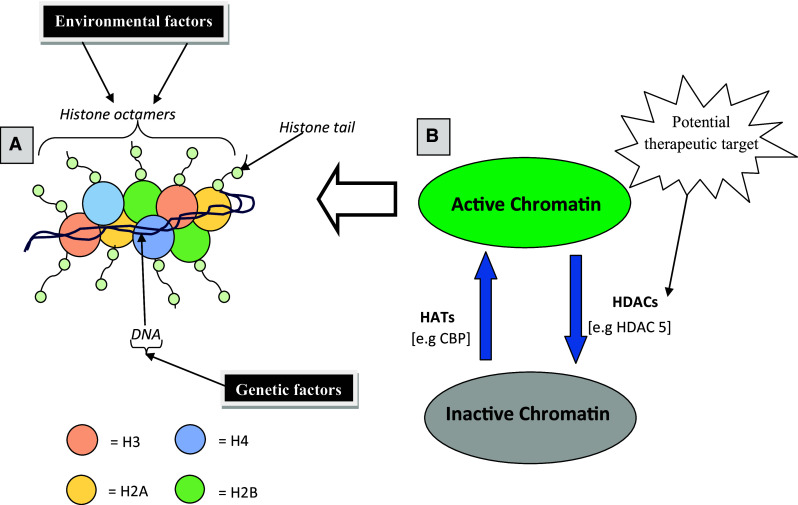Fig. 1.

Schematic view of post-translational modifications of histones. a In eukaryotic cells, the DNA (consists of 147 base pairs) wraps around histone octamers (two copies each of H2A, H2B, H3, and H4) to form the nucleosome which is the functional unit of the chromatin. Projecting from the core of the histone octamers is the amino acid (-N-) terminal tails on which significant transcriptional modification occurs. b Transcriptional active or inactive states of the chromatin are balanced by the opposing actions of HATs and HDACs, respectively. Enhanced action of HATs promotes histone acetylation which allows assessibility of the DNA to the transcription factors by relaxing the chromatin resulting in an enhanced gene activity. Conversely, increased action of HDACs represses transcription (gene silencing) by deacetylating the histones. HDAC5 is one the II HDACs that shuttles between the nucleus and the cytoplasm and actively mediates gene silencing mechanism by binding hormone co-repressors. Consequently, nuclear export of HDAC5 which results in histone hyperacetylation as well as increased mRNA expression of its target genes (e.g., substance P and neurokinin 1) have been critically implicated in sensitized behavioural responses to addictive drugs [57]. In addition, toxicants such as drugs or endocrine disruptors can induce epimutations of the histone octamers [73] resulting in chromosomal abnormalities that are fundamental to addiction phenotypes and disease
